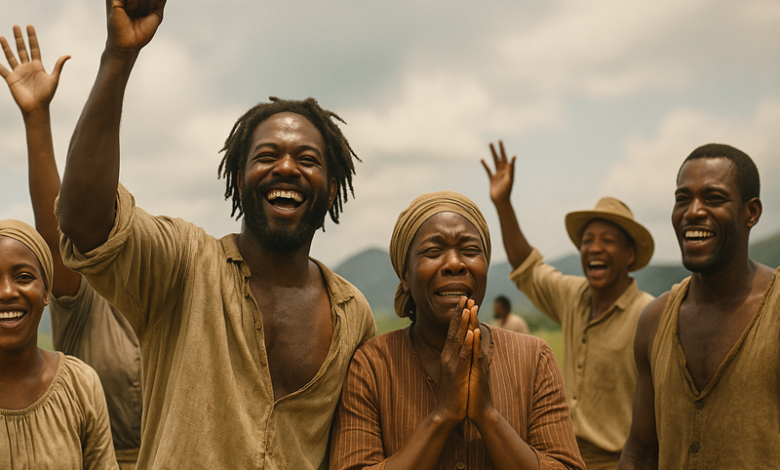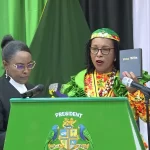Abolition of Slavery in Dominica

The Abolition of Slavery in Dominica was a pivotal moment that transformed the island’s social, economic, and political landscape. This significant event ended centuries of forced labour and set the stage for future movements toward self-governance and national identity. The journey to abolition was marked by resistance, advocacy, and legislative milestones that reflected the broader struggle against slavery in the British Empire.
A History of the Abolition of Slavery in Dominica
Dominica’s history of slavery began in the 17th century when European powers competed for control over Caribbean territories. Initially inhabited by the Kalinago, the indigenous people of Dominica, the island became a focal point for colonial ambitions due to its fertile land and strategic location. The French were the first to establish a permanent settlement in 1635, introducing enslaved Africans to work on plantations cultivating coffee, sugar, and cocoa.
In 1763, the Treaty of Paris ceded Dominica to the British, intensifying the plantation economy and the importation of enslaved Africans. The brutal conditions on plantations led to high mortality rates and a constant demand for more labour. By the late 18th century, the enslaved population outnumbered the free settlers, creating a society deeply divided along racial and class lines.
Resistance and Maroon Communities
Throughout this period, enslaved Africans resisted their oppression in various ways. Many escaped to the dense rainforests and mountains, forming Maroon communities like Morne Diablotin and Morne Trois Pitons. These communities, led by figures like Cheif Jacko, became symbols of resistance and defiance against colonial authorities. Jacko Flats, near the Layou River, was a strategic base for planning raids and providing refuge to other escapees.
Significant revolts occurred, including the Negro Conspiracy of 1785, where plans for a large-scale uprising were discovered, leading to severe reprisals. The influence of the Haitian Revolution (1791-1804) further inspired resistance on the island, heightening fears among plantation owners and colonial officials of potential insurrections.
The Abolition Movement
The late 18th and early 19th centuries saw the rise of the abolitionist movement in Britain. Activists like William Wilberforce, Thomas Clarkson, and Granville Sharp campaigned tirelessly against the transatlantic slave trade and slavery itself. Their efforts led to the passing of the Slave Trade Act of 1807, which abolished the trade of enslaved Africans within the British Empire but did not end slavery.
In Dominica, the movement gained support from free people of colour and some European settlers who advocated for the rights of the enslaved population. Local abolitionists worked alongside British counterparts to push for legislative changes.
The Emancipation Act of 1833
The culmination of abolitionist efforts resulted in the Slavery Abolition Act of 1833, passed by the British Parliament. The Act received Royal Assent on August 28, 1833, and came into effect on August 1, 1834. It declared that slavery was to be abolished throughout the British Empire, including Dominica.
Implementation of Emancipation
The implementation introduced the Apprenticeship System, a transitional arrangement requiring formerly enslaved people to continue working for their former masters for a period:
- Six years for field workers.
- Four years for domestic workers.
This system was intended to ease economic adjustments for plantation owners but was met with resistance from the freed population, who viewed it as an extension of slavery. Sir William Nicolay, the Governor of Dominica at the time, oversaw the transition. However, widespread dissatisfaction and abuses within the system led to its early termination.
Full Emancipation in 1838
Due to mounting pressure and the inefficiency of the apprenticeship system, the British government abolished it on August 1, 1838, granting complete freedom to all formerly enslaved individuals. This date is celebrated as Emancipation Day, marking a significant milestone in the island’s history.
Post-Emancipation Challenges
The aftermath of emancipation presented numerous social, economic, and political challenges for Dominica.
The plantation economy faced a labour shortage as many freed people refused to work under the same oppressive conditions. Plantation owners struggled to adapt, leading to a decline in sugar production and a shift towards small-scale farming. Freed individuals sought to own land and establish independent livelihoods, but access was limited due to the concentration of land ownership among the elite.
Some freedmen purchased small plots in areas like Grand Bay, Marigot, and Wesley, forming communities emphasising communal living and self-sufficiency. These villages became centres for the agricultural production of produce like bananas, root crops, citrus fruits, and coconuts.
Social and Political Changes
Emancipation led to significant social restructuring. The Brown Privilege Bill of 1831 had already granted political and civil rights to free people of color, allowing them to participate in governance. Figures like Jean Baptiste Philip and Edward Mathew emerged as leaders advocating for the rights of the Black population.
Dominica became notable for having a majority Black Legislative Assembly by the mid-19th century. However, tensions between the Black majority and the white planter class led the British government to intervene. In 1865, the colonial administration instituted the Crown Colony Government, reducing local legislative power and reinstating greater British control under Governor Sir Benjamin Pine.
Education and Religion
Missionary societies, particularly the Methodists and Moravians, played a significant role in education and religious instruction. They established schools and churches, promoting literacy and Christian values among the freed population. Education became a means for social mobility, with institutions like the Dominica Grammar School founded in 1893.
The Catholic Church also expanded its influence, with priests like Father Thomas Nicholas advocating for social justice and community development. Religious organisations became centres for community cohesion and cultural expression.
Cultural Revival
Post-emancipation, African cultural practices resurged. Music, dance, and festivals incorporated African rhythms and traditions. The development of Creole languages, blending French, African, and indigenous elements, became a hallmark of cultural identity. Celebrations like Carnival and Jounen Kwéyòl (Creole Day) reflect this rich heritage.
Legacy and Impact
The abolition of slavery had long-lasting effects on the island’s trajectory. The struggle for rights and representation continued into the 20th century. The formation of labor unions and political parties, such as the Dominica Representative Government Association in 1924 and the Dominica Labour Party in 1955, pushed for greater autonomy. Leaders like Edward Oliver LeBlanc and Phyllis Shand Allfrey were instrumental in these efforts.
Dominica became an Associated State of the United Kingdom in 1967, gaining control over internal affairs and eventually full independence on November 3, 1978.
The legacy of slavery influenced patterns of land ownership, economic disparities, and social structures. Efforts have been made to diversify the economy through tourism, agriculture, and the service sector. Educational initiatives aim to address inequalities and promote development.
Recognizing the importance of cultural heritage, organizations and government agencies work to preserve historical sites and traditions. The Dominica Museum and events like Emancipation Day celebrations educate the public about the history of slavery and its abolition.




